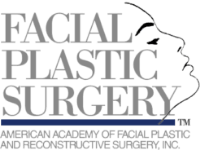Hispanic Rhinoplasty
Highlight Your Most Remarkable Features
When working with Hispanic rhinoplasty patients, Dr. Bared strives to achieve natural looking results while preserving ethnic features. The goal is always to draw attention away from the nose toward the eyes. Dr. Bared tailors each rhinoplasty procedure, taking into account the patient’s anatomy, skin thickness, nasal bone length and cartilage size.
Meet Dr. Bared
Your Rhinoplasty Expert
Dr. Bared is a renowned facial plastic and reconstructive surgeon in Miami, specializing in rhinoplasty and hair restoration. He is dual board certified by the American Board of Facial Plastic and Reconstructive Surgery and the American Board of Otolaryngology.
Highly regarded for his natural looking results, he has been featured on NBC, Telemundo and Lifetime; is published in the Journal of the American Medical Association; is a frequent invited speaker at national and international plastic surgery conferences; and has contributed to several books on the outcomes and safety of facial rejuvenation.
Featured on



Hispanic Rhinoplasty
Being of Hispanic descent himself, Dr. Bared personally understands that within the Hispanic patient population, there are a multitude of different nasal types depending on the individual’s background. In some cases, Hispanic noses resemble the Caucasian nose in anatomy and skin thickness. While in other cases, Hispanic patients may have a more Mestizo-type nose where the nasal bones may be shorter, the septal cartilage may be smaller, and the skin may be thicker, thus requiring a different approach altogether.
The Approach
While the more Caucasian Hispanic nose may need less tip support, a reduction of a hump, and strategies for the thinner nasal skin; the more Mestizo nose may require an entirely different technique.
Hispanic patients with very weak tip cartilages may need adequate projection and grafting while patients with very strong and large cartilages may need suturing and careful reduction of their cartilages. In general, Dr. Bared employs a cartilage-sparing technique for tip refinement. In his thorough understanding of the nose, he makes reductions in very safe areas of the tip cartilages in order to help prevent long term problems.
Call today to schedule your consultation
305-666-1774 or fill out this form
Rhinoplasty
can correct any of the following concerns:
The Rhinoplasty Procedure
Just as every nose is different, every nose job is individualized.
For some patients, a sharper, pointier nasal tip is deemed perfect. Others may prefer a more rounded, natural look. Whichever outcome you desire, Dr. the distance between the eyes, the shape of the face, and the existing anatomy of the nose.
Dr. Bared utilizes a computer imaging tool during the pre-op consultation to establish rapport with his patients and ensure that the vision matches the execution. By visualizing the potential results on a screen, patients are able to communicate their goals and discuss realistic expectations.
Rhinoplasty itself involves manipulating the bone and sculpting cartilage with acute precision. Dr. Bared typically uses cartilage from the the septum, which is the cartilage that divides both sides of the nose, and strategically places the grafts at the tip to support the bridge of the nose. The use of cartilage grafts prevents compromising the long term shape and function of the nose.
Optimizing Rhinoplasty Results
For the most natural results, Dr. Bared:
- Uses natural cartilage instead of artificial implants
- Avoids the use of any artificial material
- Is meticulous about the placement of incision and closure
- Uses only the finest sutures to close the wound
- Uses a caliper and projectimeter to measure changes to the
nose down to the millimeter
Rhinoplasty is performed under general anesthesia to promote your comfort and safety during the procedure.
Recovering From Rhinoplasty
The First 24 Hours
The procedure is generally performed as an outpatient. You will see Dr. Bared in the office the day following your surgery. He will prescribe you with antibiotics that you will take orally, and recommend that you use ice packs to reduce any swelling and pain.
The First Week
Plan for one week of downtime from work or school. It may also be best to stay indoors to avoid excessive sweating while the cast is in place. You should begin to notice the initial swelling from the surgery subside over the next 10 days.
The First Month
After your cast is removed, your nose will appear wide for some time. This type of swelling along with contraction of the skin is normal and expected after a rhinoplasty procedure. It is important to maintain close follow-up with Dr. Bared during the recovery process as measures can be taken to improve the healing of the nose.
Full Recovery
Rhinoplasty results take time to manifest as the skin needs time to heal and the swelling to subside. Final results will be revealed over time.
Call today to schedule your consultation
305-666-1774 or fill out this form
Copyright © 2017 – 2024 Dr. Anthony Bared, M.D., F.A.C.S.. Privacy Policy. Terms of Use. HIPAA Privacy Notice.











